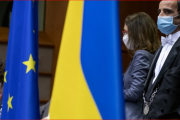Violent extremism
After 9/11, terrorism has often been used as a synonym for violent extremism. Terrorism usually includes strategies and tactics that reflect the power imbalance related to their intended target. As the individual or group would have no chance on the battle field, it is suicide attacks or attacks against state infrastructure that proves the weakness of the state and allows for fear to emerge in the population [21]. Often, violent extremists hope for a response from the much more powerful target because it will allow them to garner more sympathizers due to the fact that the target often overreacts and disproportionally attacks the community of the terrorist, thus causing many civilian casualties and further grievance.
Many violent extremists want support from the moderates of their own group and hope that they will become radicalized as well. This is especially likely when the government that was attacked responds with counter-attacks that cause collateral damage. In cases like this, extremists usually receive more support. In fact, the terrorists who foster these attacks are trying to prove to own moderates that the other side is extremist. This logic is also why many scholars have emphasized that terrorist attacks are actually not carried out because of “deep-seated and irrational hatred,” but are actually based on a rational and cold-blooded decision to attack the other group.
Thus, Lake concludes that any country facing terrorist attacks is advised to show some restraint in responding to the attacks [21]. That is easier said than done because a “perceived [and actual] threat is considered the single best group-level predictor of exclusionism and intolerance” [22]. Therefore, it is up to leaders at all levels of society to show both restraint and find ways to constructively and non-violently respond to the threat or attack. The world has seen what happens when this doesn’t occur with further extremism being the result and cycles of violence lasting for decades.
According to a guide from USAID, seven drivers of violent extremism can be identified: 1) denial of basic rights and civil liberties; 2) harsh and brutal rule that includes gross violations of human rights; 3) widespread corruption with the perception of impunity for the elite; 4) bad governance and ungoverned areas; 5) protracted, violent local conflicts; 6) repressive regimes that are perceived as illegitimate; and 7) some extremist groups got support from the state but now lost control [23].
On a more individual basis, several other points can be identified: 1) emotional vulnerability with low self-esteem and confidence; 2) experience of injustice against their family or community; 3) the offer to join a “family” that cares about the individual; 4) having a sense of purpose in life; and 5) addressing political issues and grievances and offer ‘solutions’ to those who feel isolated/marginalized [24]. It is thus a complex web of reasons that lead to violent extremism, whether it is poverty, the lack of basic human needs or embedded injustice that often justifies violence. Extremism is thus often founded on grievance-based explanations like failed secular modernization projects, particularly in the Arab world [25].
After 9/11, the general perception in many parts of the world is that religious fundamentalists are the biggest threat of violent extremism (DAESH, Al-Qaeda, Al Shabaab, Boko Haram, Taliban). The argument goes that they murder in the name of their God and they will receive an immediate afterlife reward thanks to their “martyrdom.” However, this view ignores the fact that many terrorist groups are not religious [18].
Also, religion is not “the root cause, although it is often used as a tool by terrorist organizations in recruiting and in other efforts in service of the broader strategic objective” [26]. Finally, in contrast to widespread perception, Krueger and Malečková show that in the Palestinian case it is the privileged and comparatively wealthy that are chosen to commit suicide attacks and not the uninformed or people who have nothing to lose [27].
How to deradicalize?
Much of the literature has been focusing on the question why people radicalize on an individual or collective basis and form violent extremist groups. In the last ten years or so, the question why people want to get away from violent extremism has become more popular. Thereby it is important to differentiate between two words: 1) disengagement is about behavioral change that includes leaving a group or changing one’s role within it. While values or ideals don’t necessarily change, it does require giving up achieving the change through violent means. 2) Deradicalization demands a cognitive shift, thus being receptive to other ideas that will allow for a fundamental change in understanding the world [28].
It is often violence that puts off people who have left violent extremist organizations because they get traumatized when a friend dies or what others experience on the battlefield. Another reason can be the disillusionment with the movement, seeing the incoherence of the leaders in regard to how they act in comparison to what they teach, as well as intellectual incoherencies which leads to questioning the ideology that directs the movement.
Even when people were not involved in violence it is usually this dissonance between the attitude to violence or other extreme actions and their own feelings about violence that caused them to question what was happening to them. The constant negativity about the outside world that may be linked with a missing sense of spirituality, also causes people to become stressed and disillusioned with the violent extremist group. They felt that they were put under surveillance all the time, were not free to move, think for themselves or even have their own emotional responses to the world around them.
At such point, it is particularly important that a person from the outside, from mainstream society, demonstrates support and sincere care, thus helping to get the person out of such a network. Also, former extremists point out that they sometimes had moved on with their life and wanted to have an ‘ordinary’ family life, and that the costs of being engaged in an extremist organization outweighed the benefits [24] [28]. What it really comes down to are the social and economic benefits experienced when one disengages and eventually deradicalizes.
It is often the family that plays an important role in “bringing home” the once radicalized individuals, as well as respected and trustworthy people who accompany these individuals through the change process. People such as clerics or former combatants are critical actors in the deradicalization process. Such processes are often difficult, particularly with those that have low literacy and vocational skills. Disarmament, Demobilization and Reintegration (DDR) programs around the world have faced such issues [28].
Some form of restorative justice will be also be useful to allow for the return of former extremists and reintegrate them into society. The ideas of restorative justice do not mean though that it is all about reconciliation and forgiveness, but rather that it is a victim-centered approach that holds accountable former extremists, expecting their acknowledgement of crimes committed and challenging them to take responsibility for the wrong done to others. Therefore, personal transformation, the integration into the community and some form of reparation can allow for healing with the other and the own community [29].
Moreover, Davies suggests that we need to have a critical analysis to counter extremism: critical respect, critical thinking, critical values and critical action [1]. In the first place it is important to understand that the opposite of extremism is not being moderate. Often, there is the fear of offending certain religious or cultural groups, because this is seen as being intolerant.
However, it needs to be clear that certain lines cannot be crossed like wife-beating, female genital mutilation, or the stoning of those labeled adulterers—and a host of other factors that fully disrespect human safety and well-being. In terms on critical thinking, education is of great importance since allows people to read between the lines of what the media is portraying, so the messages of manipulation can be deconstructed.
When it comes to critical values, it is particularly human rights that stand out as well as the often-difficult realization that there is more than one truth. Without wanting to fall into a postmodern trap of relativism, it is essential that different narratives be portrayed, with a focus on those people who do not have sufficient or any voice in life choices, like women, the disabled, ethnic, racial and religious minorities. Finally, critical action can be the basis of the three other points noted above (critical respect, thinking and values), since it allows the building a global civil society that gradually develops resistance to extremism and ultimately violence as well [1].
Conclusion
Extremism can have many forms. In this short paper, we have discussed some dimensions of extremism (political, social, religious) as well as violent extremism and how it is possible to deradicalize individuals caught up in its complex web. While extremism is mostly linked with negative ideas and actions, it also brings about positive change for society and helps overcome social injustice. Therefore, it is important to determine whether extremism is negatively focused and uses violence or not. This marks a major difference in identifying whether some forms of extremism can be potential allies for constructive and non-violent change.
However, it is clear that extremism can a be very highly destructive, devastating communities and causing much suffering. It is thus essential to have clarity about what extremism is, and the kinds of extremism that needs to be rejected and welcomed. It is the latter that is connected with ideas and actions that are meant to overcome violence along with the political, social and religious manipulation that threatens individual and group safety and well being.
This text has been prepared for Initiatives of Change at their meeting in July 2016.
Bibliography
[1] L. Davies, “Education against extremism,” 2008.
[2] A. Bartoli and P. T. Coleman, “Dealing with extremists,” Beyond Intractability, 2003. [Online]. Available: http://www.beyondintractability.org/essay/dealing-extremists.
[3] J. Githens-Mazar, “The rhetoric and reality: Radicalization and political discourse,” Int. Polit. Sci. Rev., vol. 33, no. 5, pp. 556–567, 2012.
[4] M. Ferrero, “Radicalization as a reaction to failure: An economic model of Islamic extremism,” Public Choice, vol. 122, no. 1/2, pp. 199–220, 2005.
[5] J. Galtung, “Cultural Violence,” J. Peace Res., vol. 27, no. 3, pp. 291–305, 1990.
[6] M. Hornsey, “Social identity theory and self-categorization theory: A historical review,” Soc. Personal. Psychol. Compass, vol. 2, no. 1, pp. 204–222, 2008.
[7] P. Knigge, “The ecological correlates of right-wing extremism in Western Europe,” Eur. J. Polit. Res., vol. 34, pp. 249–279, 1998.
[8] R. Melzer and S. Serafin, Right-wing extremism in Europe: Country analyses, counter-strategies and labor-market oriented exit strategies. Berlin: Friedrich-Ebert-Stiftung, 2013.
[9] K. Arzheimer and E. Carter, “Political opportunity structures and right-wing extremist party success,” Eur. J. Polit. Res., vol. 45, no. 3, pp. 419–443, 2006.
[10] B. R. Warner, “Segmenting the electorate: The effects of exposure to political extremism online,” Commun. Stud., vol. 61, no. 4, pp. 430–444, 2010.
[11] C. R. Sunstein, Republic.com 2.0. Princeton, NJ: Princeton University Press, 2007.
[12] P. M. Fernbach, T. Rogers, C. R. Fox, and S. A. Sloman, “Political extremism is supported by an illusion of understanding,” Psychol. Sci., vol. 24, no. 6, pp. 939–946, 2013.
[13] European Union Agency for Fundamental Rights, Racism, discrimination, intolerance and extremism: learning from experiences in Greece and Hungary. 2013.
[14] M. A. Morrison, T. G. Morrison, G. A. Pope, and B. D. Zumbo, “An investigation of measures of modern and old-fashioned sexism,” Soc. Indic. Res., vol. 48, no. 1, pp. 39–50, 1999.
[15] World Health Organization, “Global and regional estimates of violence against women: Prevalence and health effects of intimate partner violence and non-partner sexual violence,” Geneva, 2013.
[16] C. Liebman, “Extremism as a religious norm,” J. Sci. Study Relig., vol. 22, no. 1, pp. 75–86, 1983.
[17] E. Berman, “Hamas, Taliban and the Jewish underground: An economist’s view of radical militias,” Cambridge, MA, 2003.
[18] L. R. Iannaccone and E. Berman, “Religious extremism: The good, the bad, and the deadly,” Public Choice, vol. 128, no. 1–2, pp. 109–129, 2006.
[19] A. J. Fenton, “Change and continuity in Indonesian Islamist ideology and terrorist strategies,” Al-Jami’ah J. Islam. Stud., vol. 52, no. 1, pp. 1–24, 2014.
[20] A. Varshney, Ethnic conflict and civil life: Hindus and Muslims in India. New Haven, CT: Yale University Press, 2002.
[21] D. A. Lake, “Rational extremism: Understanding terrorism in the twenty-first century,” Dialog-IO, vol. 1, no. 1, pp. 15–29, 2002.
[22] D. Canetti-Nisim, E. Halerpin, K. Sharvit, and S. E. Hobfoll, “A new stress-based model of political extremism: Personal exposure to terrorism, psychological distress, and exclusionist political attitudes,” J. Conflict Resolut., vol. 53, no. 2, pp. 363–389, 2009.
[23] G. Denoeux and L. Carter, “Guide to the drivers of violent extremism,” Washington, D.C., 2009.
[24] T. Choudhury, “Stepping out: Supporting exit strategies from violence and extremism,” London, 2009.
[25] Q. Wiktorowicz, Radical Islam rising: Muslim extremism in the West. Lanham, MA: Rowman & Littlefield, 2005.
[26] R. A. Pape, Dying to win: The strategic logic of suicide terrorism. New York, NY: Random House, 2005.
[27] A. B. Krueger and J. Malečková, “Education, poverty and terrorism: Is there a causal connection?,” J. Econ. Perspect., vol. 17, no. 4, pp. 119–144, 2003.
[28] N. C. Fink and E. B. Hearne, “Beyond terrorism: Deradicalization and disengagement from violent extremism,” Vienna, 2008.
[29] H. Zehr, The little book of restorative justice. Intercourse, PA: Good Books, 2003.








































admin in: How the Muslim Brotherhood betrayed Saudi Arabia?
Great article with insight ...
https://www.viagrapascherfr.com/achat-sildenafil-pfizer-tarif/ in: Cross-region cooperation between anti-terrorism agencies needed
Hello there, just became aware of your blog through Google, and found ...